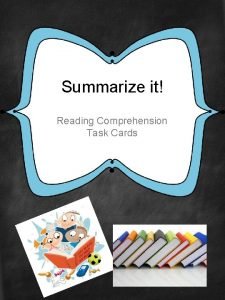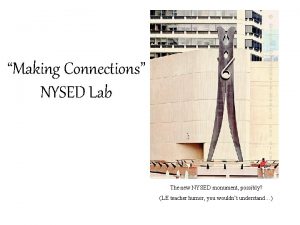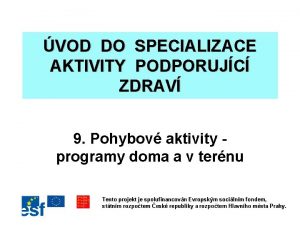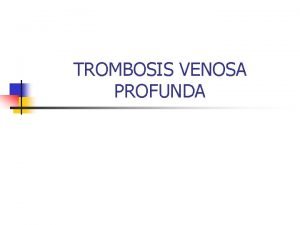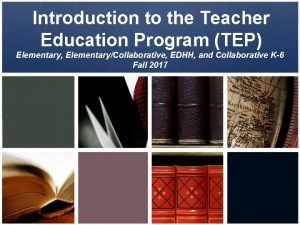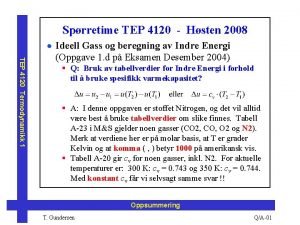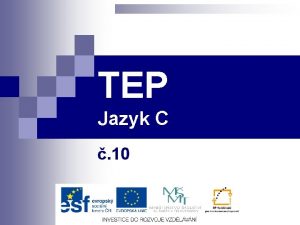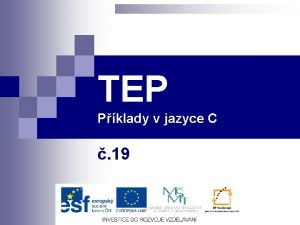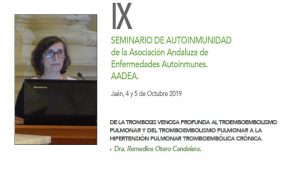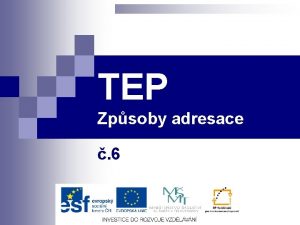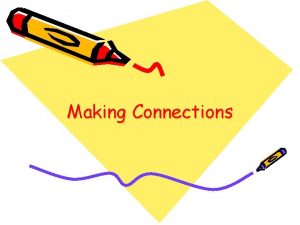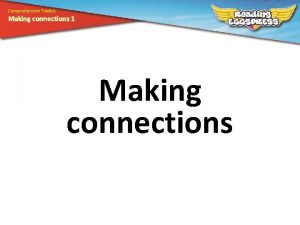MAKING THE CONNECTIONS How to use your TEP











- Slides: 11

MAKING THE CONNECTIONS How to use your TEP to form a work plan

From our TEP Urgent Environmental Issues #1 A. Climate Change 5. Invasive Species and Insect Infestation a. Traditional Practices - Reduced productivity / greater stress on traditional fish, plant and animal species c. Water Quality – Increase in water-borne illnesses, taste and odor issues, higher contaminate loading, increase in algal blooms, decrease in dissolved oxygen, impacts to aquatic species.

A. Long Term Goal: Fort Mojave Tribe will have a comprehensive Climate Change Adaptation Plan that will identify hazards, risks and vulnerabilities and contain long term mitigation strategies to protect human health, cultural resources, critical infrastructures and economic resources. Feasible Solutions – 1. Identify climate change impacts for the Fort Mojave Indian Reservation a. Initial scoping of climate change impacts on resources important to the tribe b. Build and maintain support with tribal leadership and community (outreach and education) c. Seek Tribal Council approval of resolution supporting the climate change adaptation initiative d. Create climate change planning team with internal and external partners

2. Impact and Vulnerability Assessments, Risks and Priorities a. Develop climate change scenarios based on available information b. Identify/ characterize current and projected impacts on planning areas of interest c. Assess vulnerabilities of planning areas and their impacts d. Assess risks e. Prioritize planning areas for development of adaptation strategies Ok… so we have an overall priority, what is it going to change or impact, a long term goal, and feasible solutions on how to achieve that goal. The next section would be resources for information, partnerships, additional funding sources, ect. .

So how do I form this information into my work plan? Component #3: Coordination and Consultation Regarding Climate Change Description Accessing impacts of Climate Change to the Fort Mojave Indian Tribal Community. From the TEP From GAP Guide Book Long-Term Outcome Fort Mojave Tribe will have a comprehensive Climate Change Adaptation Plan that will identify hazards, risks and vulnerabilities and contain long term mitigation strategies to protect human health, cultural resources, critical infrastructures and economic resources. Measures B. 5. 1 A current baseline needs assessment or comparable planning document to form a strategic plan with long term program development and implementation goals identified and prioritization of activities by the environmental program to address the threat of climate change. C. 3. 14 Tribe has developed a Climate change vulnerability/ risk assessment. Intermediate Outcomes Identified climate change impacts for the Fort Mojave Indian Reservation. Support from Tribal Council and Tribal Community for Climate Change initiatives. Climate Change planning team identified current and projected impacts on planning area of interest due to climate change. Mitigation Strategies that will form the basis of the Comprehensive Climate Change Adaptation Plan Estimated Component Cost $23337 Estimated Work Year (FTE) 0. 21 EPA Program Coding Program Code: Cross Media Activities Objective: Other: Climate Change Sub-objective: N/A

Commitment 3. 1 From TEP, Feasible Solutions With more details Initial scoping of climate change impacts on resources important to the Tribe. Gather known data and climate change statistics to present a comprehensive presentation on the effects of climate change on tribal resources to the Fort Mojave Tribal Council and Tribal community. Commitment 3. 2 Work with Tribal Council and Tribal Community to create a climate change planning team. The planning team should consist of Environmental Staff, Administration Staff, Tribal Planner, Emergency Operations Center Staff, Public Health Preparedness Coordinator, GIS staff, Agricultural staff and interested community members.

Commitment 3. 3 The planning team will begin to assess risks, and assess vulnerabilities of planning areas and their impacts. (this will be a multiple year project) This will be information used to develop a Comprehensive Climate Change Adaptation Plan in subsequent years. Reporting and connecting the dots. 2 nd Quarter 3. 3 Report Planning team decided that the insect infestation was the biggest pressing risk. A sub committee to look at risks and mitigation efforts was formed. The sub committee consists of Environmental staff, Public health staff, Agriculture staff, and Natural Resources staff identified the following issues within the sub group related to insect infestation: 1. Mosquitos are the biggest health threat 2. Mosquito season is increasing each year due to changing weather patterns. 3. Types of mosquito breeds are changing and the health threats are changing with new mosquitos moving into the region. 4. Mosquitos are no longer ebbing with the high temperatures. They are in fact adapting to the hotter environment. 5. Agriculture is a major contributing factor for mosquito breeding sites.

So as you can see, insect infestation was identified as a priority in the TEP under Urgent Environmental issue #1, Section A, subsection 5. The long term goal was to form a Comprehensive Climate Change Adaptation Plan over a 5 year period, using a planning team to gather information, prioritize the information and form mitigation strategies with the information gathered. If I were to go on to show you year two and three, you would see that we put together a sub planning team and are working with tribal and local farmers, Mohave County, San Bernardino County, Clark County and Bullhead City Arizona on long term mitigation strategies such as reducing flood irrigation and replacing it with drip irrigation in populated areas, having the farm hands putting larvacide in the pools that form behind the flood irrigation gates to stop the development of the mosquito larva into full grown mosquitos and working with public health on trapping and testing mosquitos and setting limits on when it is appropriate to use fogging or aerial spraying for mosquito control.

So as a recap: A. Your Component is taken directly from your TEP. B. Your long term component goal is taken directly from your TEP. C. Your Measures are taken from the GAP Guidebook. D. Your Commitments are taken from the TEP, broken down into manageable steps and with added detail on how you will accomplish the task. E. Your quarterly report tells where you are in accomplishing that task with details on the process.

Questions?

Christine Medley Fort Mojave Dept. of Emergency Response Director christinemedley@fortmojave. com 760 -326 -9650
